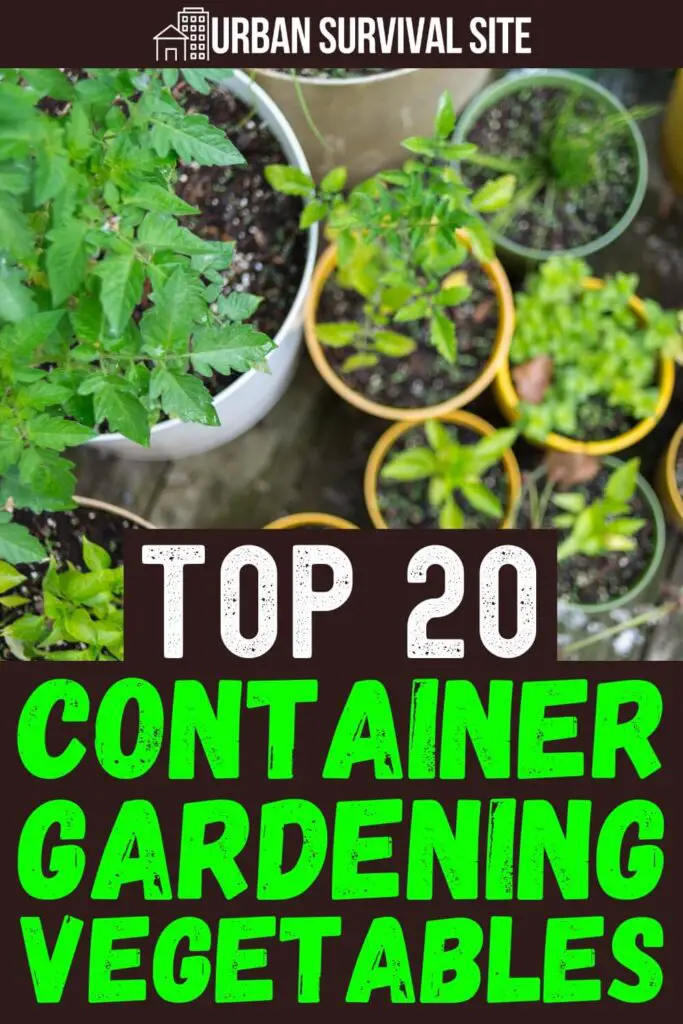Top 20 Container Gardening Vegetables
Discover 20 vegetables you can grow in 5-gallon buckets! Perfect for patios, small spaces, and beginners wanting fresh homegrown food. The post Top 20 Container Gardening Vegetables appeared first on Urban Survival Site.
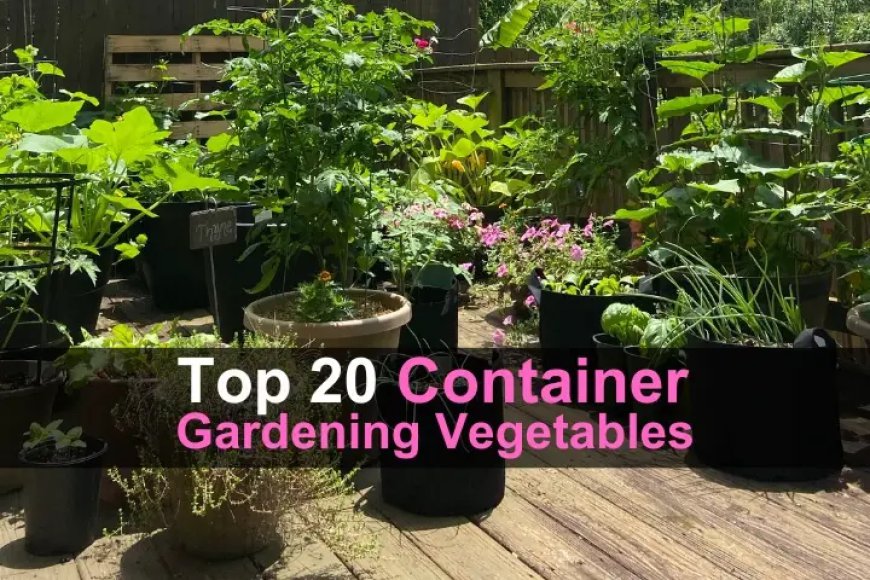
Estimated reading time: 16 minutes
If you've been waiting to grow your own vegetables until you have a large backyard, your wait is over. You can successfully grow veggies for your family in containers, and the best part is that those containers do not have to be fancy or expensive. Five-gallon buckets work very well.
In addition to the versatility of being able to harvest vegetables from your deck or patio, bucket gardening also offers versatility. You can move your buckets or containers undercover inside during a frost or heavy rain or wind storm or out into the sunshine on an early spring day. Your container vegetables also are less susceptible to weeds or damage from pests.
The first step to container gardening is choosing a quality container. Make sure you get something that will last. It'll be more expensive at first, but in the long run it'll save you money.
If you want to go with five-gallon buckets, be sure they're food-grade, and be wary of cast-off buckets that may have stored toxic substances. Chemicals often leech into the plastic, so save these buckets for storing non-food supplies around the homestead.
Check with local restaurants, however, as they may be happy to give you buckets that once stored food items. You also can purchase new food-grade buckets online or from big box stores.
Want to save this post for later? Click Here to Pin It On Pinterest!
What To Do Once You Get Your Buckets
After you obtain your buckets, the next step is to prepare them for planting. Drill or punch a few holes in the bottom of the bucket. One hole about every three inches usually will offer adequate drainage.
Next, place about two inches of loose gravel in the bottom of the bucket to assist with drainage. Then fill the buckets with a high-quality potting soil mix that includes peat moss and compost, allowing room for the plants themselves as you determine the amount of soil. You may plant either seeds or starter plants in a five-gallon bucket.
Water your newly-sowed veggies well and then check for the soil's moisture level for further watering. Container plants often need daily watering during the heat of summer because they can dry out rapidly.
Also, plan to fertilize your plants once or twice a month, depending on the plant and the soil. Weeds tend not to be a big problem with bucket gardening, but you can keep away even the stray weed or two by spreading a thin layer of mulch on top of the soil. This added layer will also help your soil retain moisture.
Here are some of the vegetables that grow well in containers, and especially in five-gallon buckets.
1. Beans
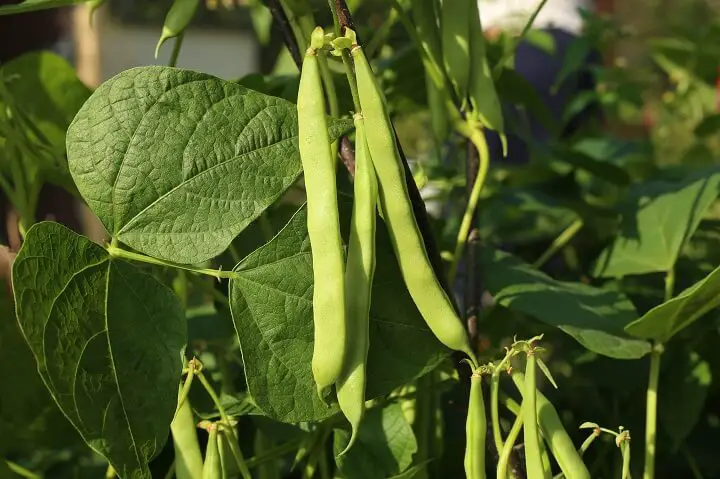
Both pole beans (the tall, vining beans) and bush beans (which leaf out, not up) do well in buckets. If you are planting pole beans, insert trellis or pole supports for the vines into the bucket before you sow the seeds to prevent damage.
Bush bean varieties don't require support, and you can try three plants per bucket. Beans thrive in full sun and well-draining soil, and they’re fast growers—perfect for beginner gardeners.
More Info: Growing Beans In Containers
2. Beets

These veggies adapt very well to a bucket home. Sow a few seeds every couple of weeks from spring through early July for a continuous harvest. To speed up germination, soak the seeds in warm water for a few hours before you sow them.
Then plant three or four seeds together about an inch deep and about four inches away from other seeds. Water well and harvest the plants when the beets are golf ball-size.
More info: How to Grow Beets in Containers
3. Carrots
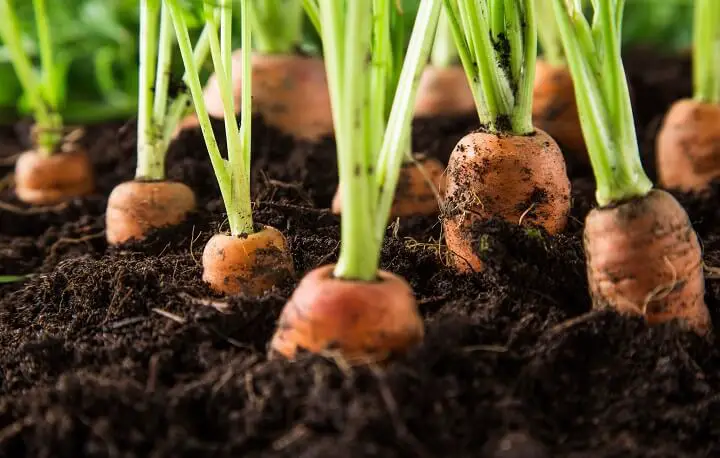
Standard carrots need more depth than a bucket can provide, but certain short varieties will thrive in containers. Sow seeds about two to three inches apart and place the bucket in a sunny location. Keep the soil consistently moist but not soggy, especially during germination.
Look for compact types like “Thumbelina” or “Parisian” for the best results in shallow soil. Thin the seedlings as they grow to give each carrot room to develop properly.
More Info: How to Grow Carrots in Pots or Containers
4. Chilies
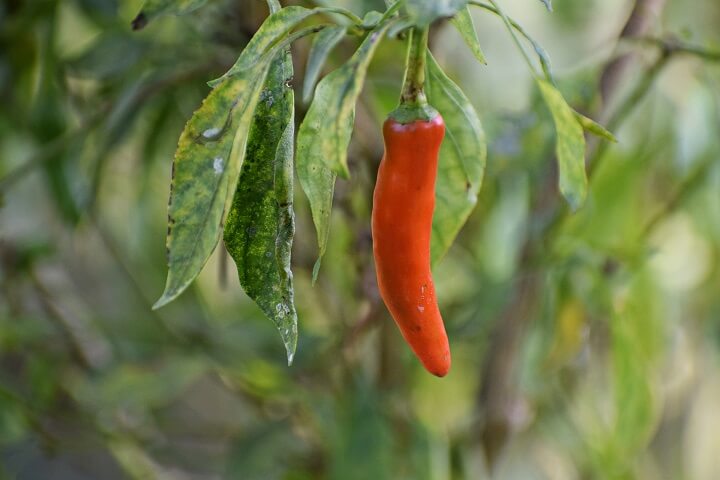
Chili plants like things warm and sunny, but they can adapt to a bucket home that is placed in a sheltered spot that receives direct sunlight. Bring them indoors if there is any chance of frost.
Use a well-draining potting mix and keep the soil evenly moist but not waterlogged. Most chili varieties do best with one plant per bucket to give them space to branch out. With a little heat and care, you'll be rewarded with a fiery harvest.
More Info: Growing Chilies in Pots
5. Cucumbers
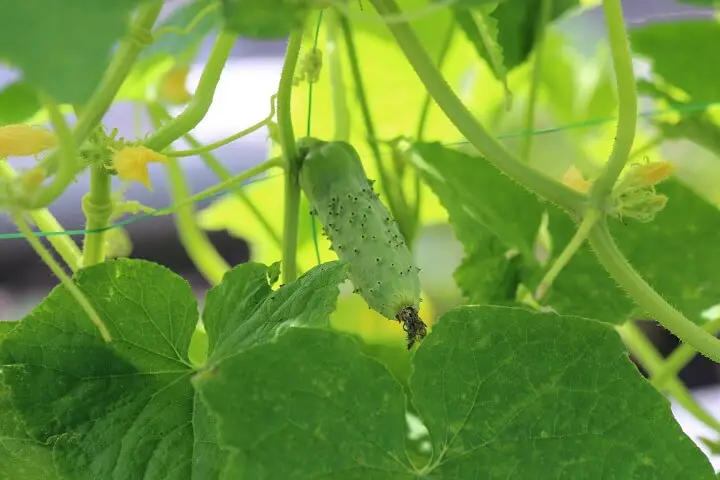
Bush-type cucumbers are easy to grow in five-gallon buckets. Fill your bucket with a light, rich blend of compost, peat moss, or coconut coir and perlite. Water well. Add a trellis or a tomato cage to help the cucumber plant grow up, not out. Water thoroughly.
Choose compact varieties like “Bush Champion” or “Spacemaster” for the best fit in containers. Keep the soil consistently moist, especially once fruit starts to form, and harvest regularly to encourage continued production.
More Info: How to Grow Cucumbers in a Container Garden
6. Eggplant
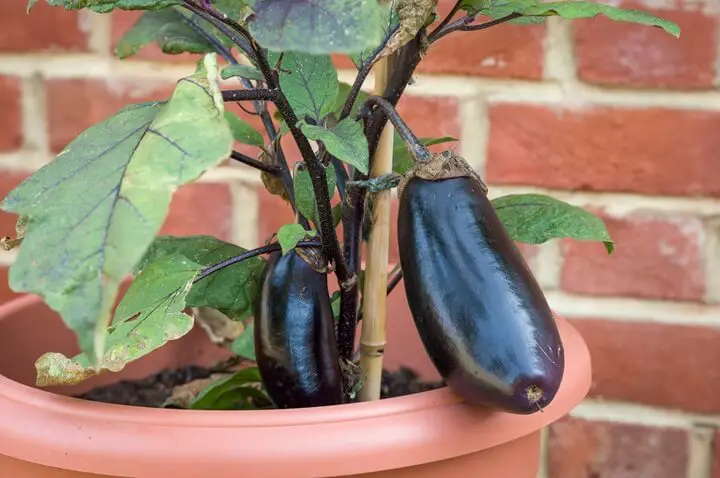
Surprisingly easy to grow in containers, eggplants just need plenty of sunlight and warm temperatures. Choose compact varieties like ‘Fairy Tale' or ‘Patio Baby' for best results.
Place one plant per bucket, give it support with a small stake or cage, and watch it flourish. With regular watering and occasional feeding, your eggplant will reward you with a rich harvest.
More Info: Growing Eggplant in Containers
7. Green Onions
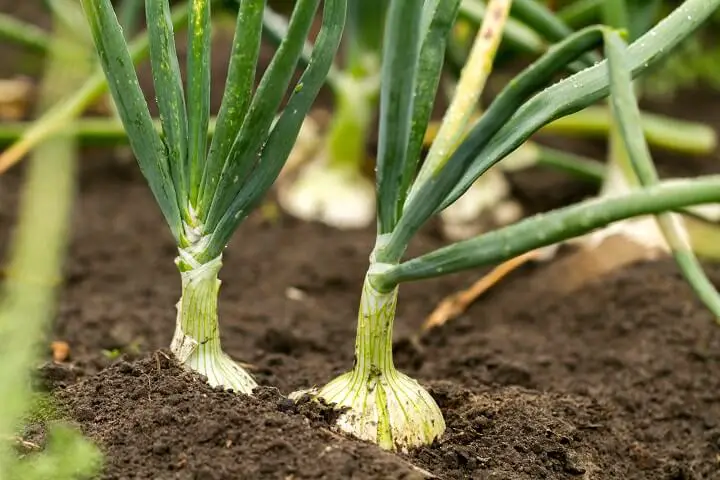
Green onions, also known as spring onions or salad onions, do not require deep soil, so they are perfect for bucket gardening. Sow onions about a half-inch deep into a bucket every few weeks from early spring through fall for a season-long supply.
Be careful to keep green onions watered in hot, dry weather. You can harvest them at just about any stage, depending on how mild or strong you like the flavor. They’re quick to grow and perfect for tucking into small gaps in your container garden.
More Info: How to Grow Green Onions in Containers
8. Herbs
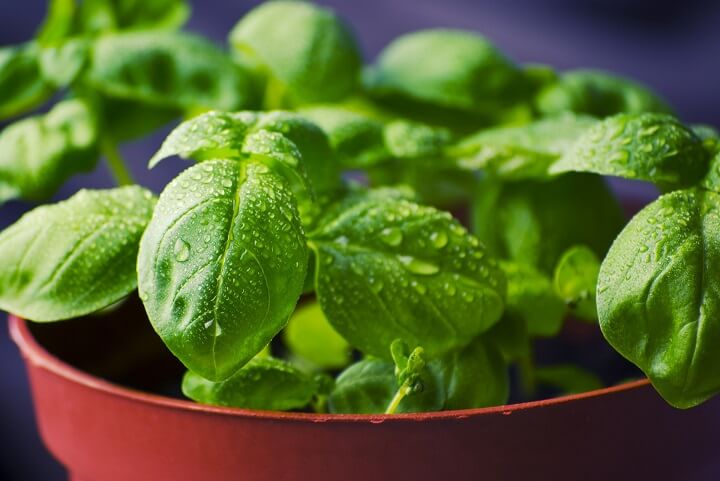
Some of your favorite kitchen herbs will thrive in a five-gallon bucket. Allow one plant to spread and grow in one bucket. Here are some easy-to-grow choices: thyme, sage, mint, parsley, rosemary, and oregano.
Save tender basil and coriander for your kitchen windowsill. Most herbs prefer well-drained soil and full sun, so place your buckets where they'll get plenty of light. Regular harvesting encourages bushier growth and keeps the plants producing longer.
More Info: 11 Useful Herbs You Can Grow In Buckets
9. Kale
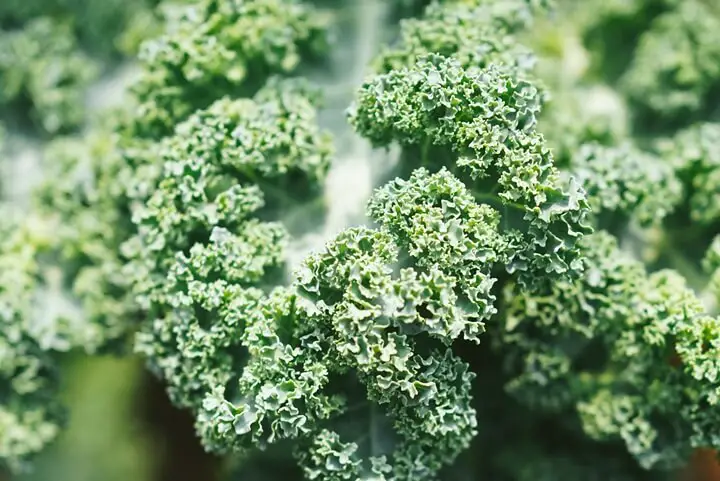
Kale is another leafy green that adapts well to containers. It prefers cooler temperatures, so it's perfect for early spring and fall planting.
Plant two to three kale seedlings per five-gallon bucket, and keep the soil moist but not soggy. Kale is pretty hardy and will often keep producing even after a light frost—just one more reason to love it!
More Info: How to Grow Kale in Pots
10. Lettuce

Most types of lettuce do very well in a five-gallon bucket. You can plant as many as four heads per bucket, and the containers are a great way to protect the plants from rabbits and other creatures who want to nibble on the tasty leaves.
Lettuce prefers cooler weather, so it's a great crop for early spring and fall. Try planting a mix of leaf and head varieties for a longer, more diverse harvest.
More Info: Growing Lettuce in Containers
11. Melons
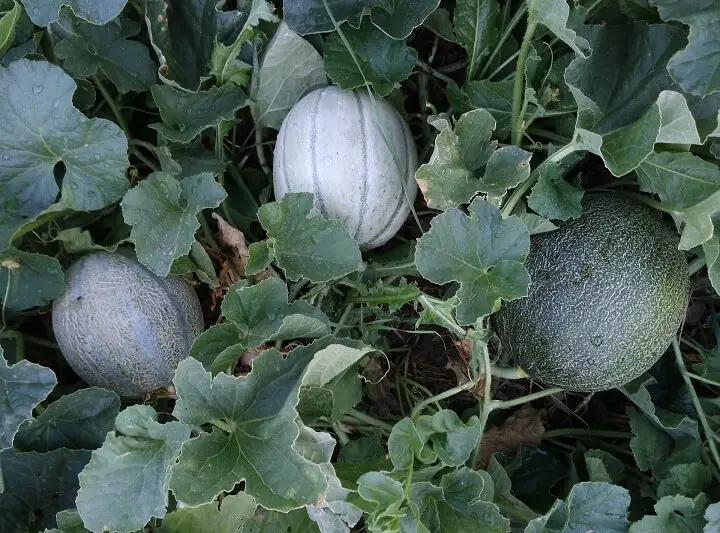
As you might expect, melons need space to grow, so you should plan on only one melon plant per five-gallon bucket.
Also, it's a good idea to select dwarf bush varieties such as “Bush Sugar Baby” musk melons and “Bush Jubilee” watermelons that tend to grow well in containers.
More Info: Growing Melons in Pots
12. Okra

An excellent addition to soups and stews, a single okra plant can grow well in a five-gallon bucket. These plants need well-drained soil, so check on those holes to be sure water is adequately draining as you grow your seedling.
Okra loves heat and full sun, so place your bucket in the warmest spot you’ve got. Harvest the pods when they’re about 3 to 4 inches long for the most tender texture and best flavor.
More Info: How to Grow Okra in Containers
13. Onions
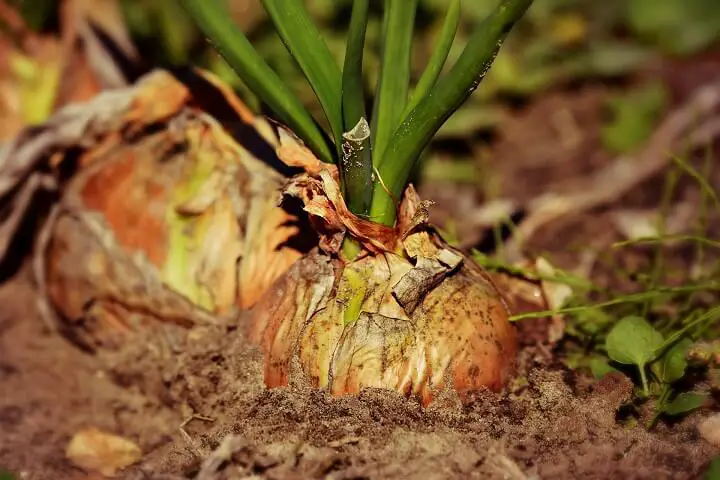
You can grow regular onions in buckets, but since these plants need at these three inches of open soil around them to develop properly, you are limited in quantity.
Plan on two or three onions per bucket. Place your bucket where it will receive plenty of light and fertilize regularly.
More Info: How to Grow Onions in Containers
14. Peppers
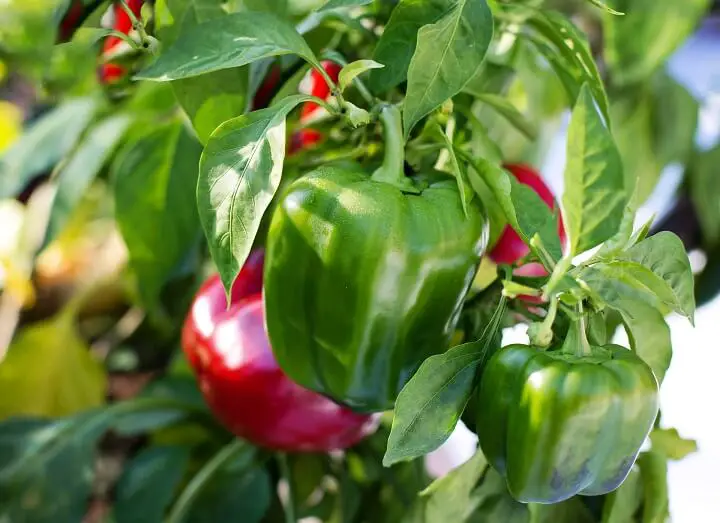
Five-gallon buckets can be the perfect home for many varieties of peppers.
Here are a few types that adapt particularly well to container gardening: sweet peppers such as Bell-Boy, Sweet Chocolate, and Gypsy and hot pepper varieties such as Red Cherry, Jalapeno and Cubanelle. One plant per bucket is your best bet.
More Info: How to Grow Peppers in Pots
15. Potatoes
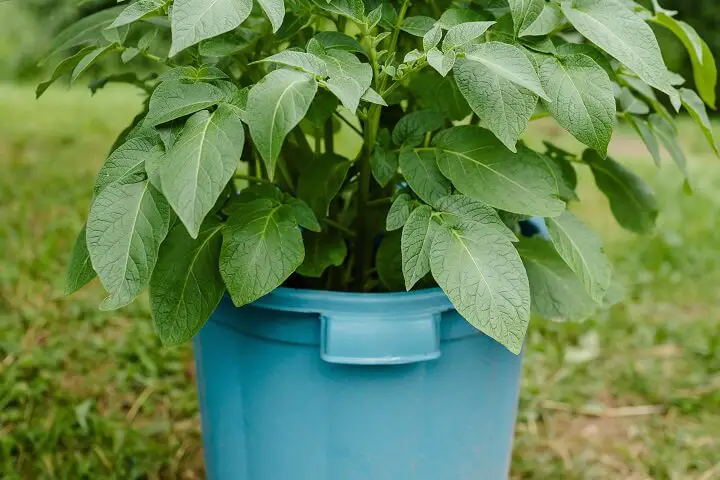
Potatoes in buckets? Yes, you can. Potatoes need depth but not much space. Here are the steps for growing spuds in a five-gallon bucket.
- Pour about four inches of potting soil into the bucket, and then place two small seed potatoes on top of the soil.
- Add more soil or compost over the top of the potatoes to a depth of about 2 inches.
- Sprinkle soil liberally with water and keep soil evenly moist as the plant grows
- Place bucket in a warm, sunny spot.
- Add more soil (or compost) when you see green growth; leave only the tips of the top leaves visible.
- Continue adding soil as you see a few inches of new growth, and keep it up until you run out of room in the bucket.
- Fertilize weekly with a low-nitrogen fertilizer.
Here's why potatoes are my favorite food to grow.
16. Radishes
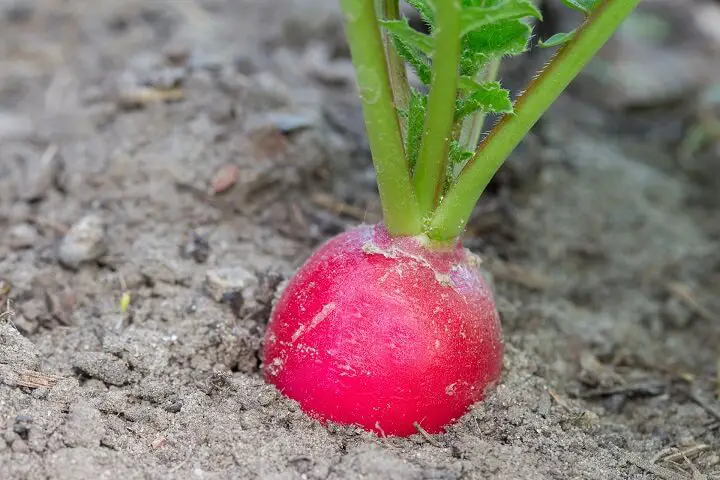
You can plant about 10 radish plants per five-gallon bucket. Sow the seeds about one inch deep and about an inch apart. They should be ready to harvest in a little over a month.
Re-sow for a continuous supply of these easy-to-grow peppery veggies that are great in summer salads.
More Info: How to Plant and Grow Radishes in Containers
17. Spinach
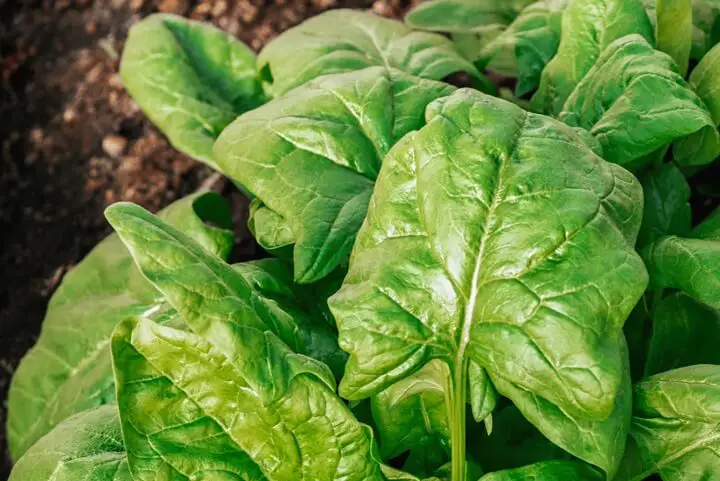
Spinach grows quickly and doesn't need deep soil, making it a great choice for bucket gardening. You can sow seeds directly into the soil and space them about three inches apart.
Place the bucket in a spot that gets morning sun but a bit of afternoon shade, especially as the temperatures climb. Harvest the outer leaves regularly to encourage continued growth, and enjoy fresh spinach in your salads, sandwiches, and smoothies.
More Info: How to Grow Spinach in Pots
18. Swiss Chard
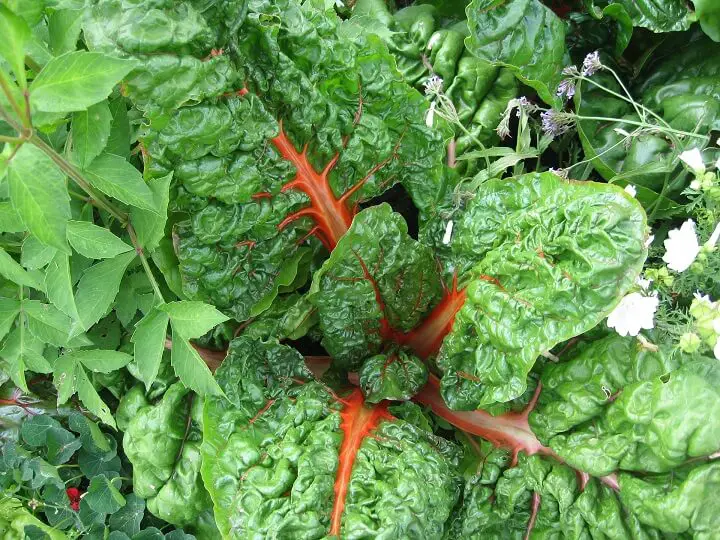
Swiss chard is not only tasty in stews and salad dishes, it is also an attractive container plant. Sow Swiss chard seeds about one inch deep and thin out the seedlings as needed.
Harvest regularly, cutting away the outer leaves first. It tolerates both cool and warm weather, making it a reliable crop for much of the year. Plus, it keeps producing new leaves after each harvest, so one bucket can give you a steady supply.
More Info: Growing Swiss Chard in Containers
19. Tomatoes
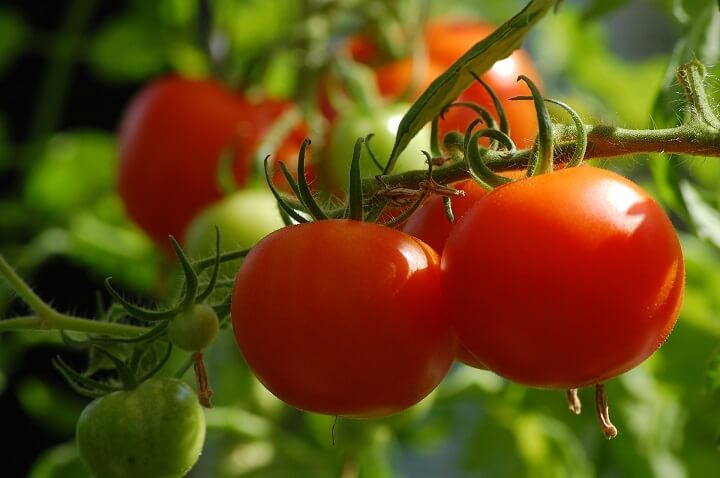
Tomatoes do very well in containers with cherry or bush tomato plants being your best bets. Tomato plants require even watering and are very susceptible to frost. Fertilize with high-potash fertilizer designed for tomatoes for better yield.
Support plants with stakes or a cage as they grow. Water thoroughly but do not allow water to puddle. Too much watering can cause tomatoes to crack and split.
More Info: The Complete Guide to Growing Tomatoes in Containers
20. Zucchini
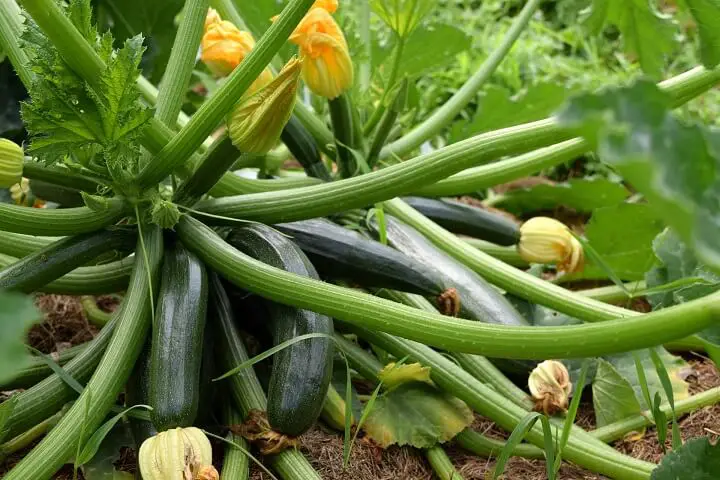
Zucchini plants also like their space, so for container gardening, look for compact zucchini varieties such as Eight Ball, Geode, Jackpot hybrid or Raven, for best results.
Here are some steps to follow for a sizeable zucchini harvest from your bucket.
- Plant about five zucchini seeds in the middle of the bucket, covering them with about an inch and a half of soil.
- Water well. After that, keep the soil moist but not soggy.
- After the seeds germinate, cut away the smaller, weaker seedlings, leaving the two largest seedlings.
- When these seedlings reach about eight inches, cut away the weakest one.
- Harvest zucchinis when they are about six inches long (depending on the variety).
While five-gallon buckets are utilitarian and inexpensive, you may be put off by the look of them on your deck or patio. If you'd like your container garden to be a little more aesthetically pleasing, you can spruce up your buckets before planting. One idea is to cover them with decorative burlap.
After you have drilled the holes in the bottom of the bucket, but before you have added the soil, cut a section of burlap that is slightly wider and longer than the bucket's circumference. Then fold and wrap the burlap around the bucket, tucking in any loose edges as you go. Secure the burlap by tying pieces of jute or twine around the fabric– one near the top and one close to the bottom.
Another idea is to group your five-gallon vegetable buckets with buckets that are filled with colorful perennial or annual flowers. Marigolds serve double duty by looking pretty and helping keep away some pests.
You could also paint the exterior of your buckets using a spray or liquid paint formulated for use on plastics. Clean the exterior of the buckets thoroughly before painting and allow the paint to dry before adding the soil and planting.
Five-gallon buckets have so many uses around your homestead. You can use them for storing, carrying, mixing, and scooping all sorts of things. When you use food-grade buckets for gardening, you not only have inexpensive and sturdy containers, you also keep one more thing out of the landfills.
Like this post? Don't Forget to Pin It On Pinterest!
You May Also Like:
The post Top 20 Container Gardening Vegetables appeared first on Urban Survival Site.
What's Your Reaction?























